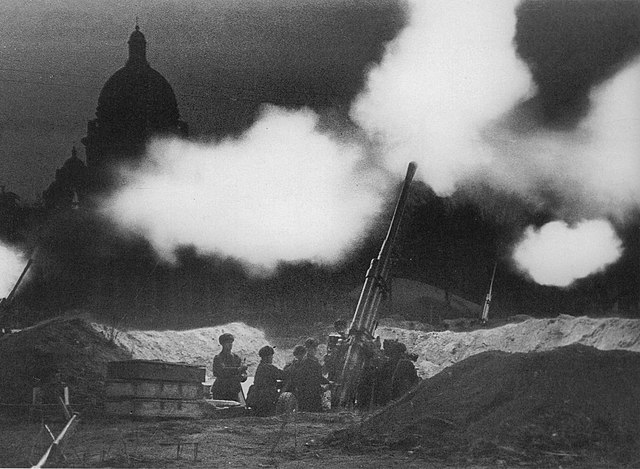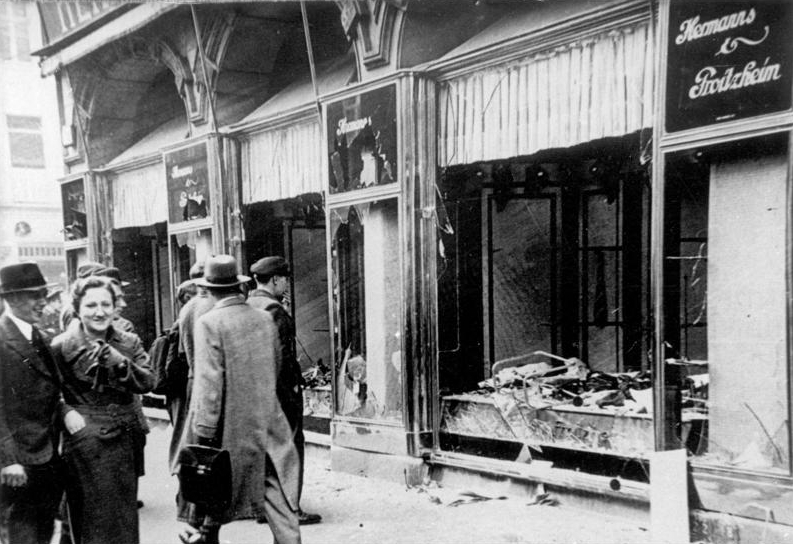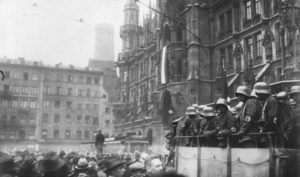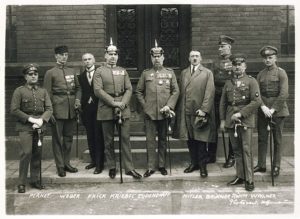Remembering History:
- Mussolini Founds Italian Fascist Party (23 Mar 1919)
- Germans Massacre Italians (23 Mar 1944)
Mussolini Founds Italian Fascist Party (23 Mar 1919)

Public Domain
Benito Mussolini, publisher of Socialist newspapers and veteran of World War I, founds the Fasci di Combattimento (“Fighting Bands) based on 19th century Italian peasant revolutionaries. In forming this party, more commonly called Fascist Party, Mussolini formally broke away from his Socialist peers creating a movement that fused elements of Socialism and Nationalism into this new movement. Fascism repudiated, as both Communism and Socialism does, democracy and civil liberties with governance done by a single party with a powerful central figure. Fascism rejects the Communist argument against capitalism and instead argues it can be made to serve the nation without taking it away from its owners. Nationalism, also derided by Communists, was elevated, and made an important element to bring people to support the goals of the new order.
Italy was suffering the after effects of World War I. Inflation was high, the morale of the people was low, and the parliamentary democracy that ran Italy seemed weak and ineffectual. Worse despite Italian support for Great Britain and France, they got little from the Treaty of Versailles which made Italians unhappy as well. Mussolini’s Fascist Party stepped in during this time to offer an alternative to the chaos. And it drew many wanting to remake Italy into a more powerful nation. Dressed in black shirts as their uniforms, they began a program of intimidation and terrorism against Communists, Socialists, and those that supported the current system.
In October 1922, Mussolini led a march on Rome which led to King Victor Emmanuel III appointing him as prime minister. He formed a three- member cabinet and presided over the parliamentary government. Using his Black Shirts and others, they quickly came down hard on political opponents and anyone who disobeyed the new orders edicts on how things were to be done. By 1925, the parliamentary government was formally ended with the proclamation of Mussolini as Il Duce (The Leader).
Adolf Hitler admired Mussolini’s rise to power and copied his tactics and beliefs in forming the National Socialism movement in Germany.
“The rights of the State as expressing the real essence of the individual. And if liberty is to he the attribute of living men and not of abstract dummies invented by individualistic liberalism, then Fascism stands for liberty, and for the only liberty worth having, the liberty of the State and of the individual within the State. The Fascist conception of the State is all embracing; outside of it no human or spiritual values can exist, much less have value. Thus understood, Fascism, is totalitarian, and the Fascist State — a synthesis and a unit inclusive of all values — interprets, develops, and potentates the whole life of a people.” Benito Mussolini, The Doctrine of Fascism, 1932
Germans Massacre Italians (23 Mar 1944)
In July 1943 the allies landed in Sicily beginning the Italian campaign. Rome itself was being bombed and Allied troops would likely land in the south and march north once they completed the Sicilian operation. The war had not gone well for the Italian military with more defeats than victories (and often the Germans having to assist them). The rationing of food, higher costs, and people generally upset with how things were being run by Mussolini led to widespread dissatisfaction. Believing the war was no longer in the interests of Italy, in late July Mussolini was rejected by his own Grand Council and arrested. Pietro Badoglio, the new Prime Minister, negotiated in secret with the allies to surrender and its terms. The Germans though were not going to allow the Allies access to Italian airbases or other support facilities. The armistice declared on 8 September by Badoglio resulted in the Germans taking Rome forcing the new government and the king to flee. Rome was occupied from September 1943-June 1944 when the Germans left making it an open city.
During the occupation of Rome, the German’s came down hard on its citizens especially those who had aided in the ouster of Mussolini and anyone who opposed them. It was not a happy time to live in Rome with German troops everywhere along with their vicious elements of the SS operating as well. The Italian partisans, who had been fighting Mussolini, now turned all their efforts on the Germans. They began acts of sabotage, coordinated attacks on Germans, and causing all kinds of mayhem. It led to a 23 March 1994 attack on a SS unit. A bomb was tossed at them killing 33 soldiers. The Germans were outraged, and reprisals were ordered. 335 Italian citizens were rounded up and taken to the Ardeatine caves. They were all shot dead as revenge for the deaths of the SS soldiers. 250 were Catholic, 70 were Jews, and the remaining unknown.

24 November 2005
Image credit: antmoose (Flikr via Creative Commons)
After the killing was done, the cave was sealed. When the Allies liberated Rome on 4 June 1944, the massacre became widely known. It shocked Rome, all of Italy and the world when the details emerged. In the postwar trials that took place, many were held to account for their part in it. Generals von Mackensen and Mälzer were sentenced to death in 1945 by a British military tribunal. Field Marshal Kesselring was sentenced to death in 1947 though pardoned later. Former SS Lieutenant Colonel Herbert Kappler was sentenced to life in prision in 1948 by the Italians. There is also an interesting story of Kappler’s game of wits with Monsignor Hugh O’Flaherty, who spearheaded the Vatican’s assistance to allied soldiers who fled to the Vatican for protection against the Germans. He visited Kappler in jail which led to his conversion to Catholicism. In 1997 his wife managed to smuggle the now old and frail Kappler (who had been diagnosed with terminal cancer) to West Germany. Italy wanted him back but West Germany saw no point to it: he was dying from cancer and in fact died a year later from it.
The Ardeatine Caves outside of Rome have become a national memorial.
Sources:
Mussolini founds the Fascist party (History.com)
Fascist Party (Britannica.com)
“The Doctrine of Fascism” (1932) by Benito Mussolini (pdf)
Germans slaughter Italian civilians (History.com)
Ardeatine Caves Massacre (U.S. Holocaust Memorial)
The Italian Resistance and the Ardeatine Caves Massacre (National WWII Museum)
Mausoleo Fosse Ardeatine












